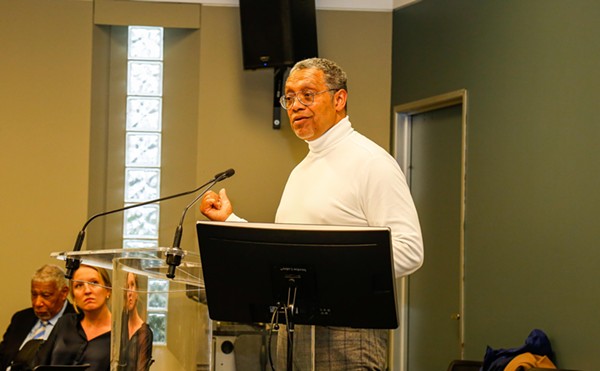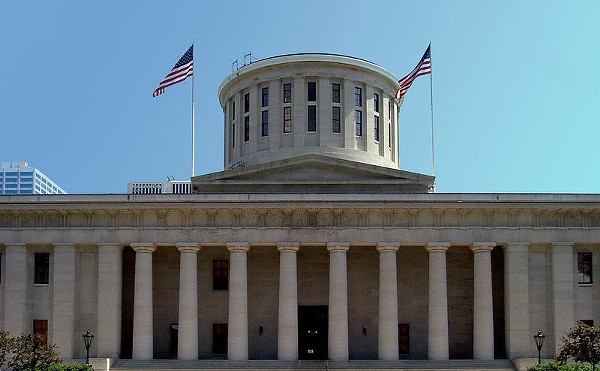"We're the minority of minorities," says Jim Farrar, the Cherokee from Michigan who co-founded that state's Coalition Against Racism in Sports and Media. Each year, he supports Wahoo protesters on Opening Day, and each year he finds few locals of similar heritage. "They're not physically here," he says. "You're not looking at them face-to-face. It's easy to pretend that they don't exist."
But it wasn't always that way. The call for Chief Wahoo's head reached its peak in the mid-1990s, as the Indians prepared their move to brand-new Jacobs Field and renewed enthusiasm for the team was paying off with constant sellouts and a long-overdue return to postseason glory.
Local activists including Juanita Helphrey, a native of the Hidatsa Nation and a leading voice for racial justice for the United Church of Christ, capitalized on the momentum. They ensured that the 35-foot-tall Chief Wahoo that for decades had been perched atop Municipal Stadium would not be moved to the new park. (The statue, since refurbished, now serves as an exhibit at the Western Reserve Historical Society, where guests are encouraged to write their feelings about Wahoo on Post-It notes.)
In 1997, Helphrey and five others were arrested for burning a Wahoo effigy outside the gates of the World Series. The charges were eventually dropped, and Helphrey has since retired.
"When Juanita was leading the efforts, we had some leverage," recalls Charlene Higginbotham, a fellow UCC member from Cleveland Heights. "We would get more time on TV and in the newspapers. It's much harder for them to ignore you when you have a Native American sitting across the table saying, 'This does not honor me or my people.'"
At one point, then-Tribe owner Dick Jacobs agreed to talks about Wahoo. A local artist even presented the organization with proposals for a non-caricaturized representation to replace Wahoo.
"There was a new stadium, a new owner, a new name for the facility, so we figured it would be an especially good time for a new image," says Reverend Marvin McMickle, a prominent local pastor and a member of the Gateway board of directors at the time. In 2000, the office of then-Mayor Michael White issued a statement decrying Wahoo as an "offensive, racist symbol," and discussed a proposal to ban the logo from all city-owned property. But the anti-Wahoo fire quickly cooled off without explanation.
"We eventually received the same general blasé response [from the organization] about how beloved an image — or at least how popular an image — it is with baseball fans," McMickle remembers. "But why should that matter? If it's wrong, it's wrong."
***
Those who love Wahoo often point to the anti-Wahoo movement's lack of success as justification for the Chief's continued survival.
Many, including outspoken sports talker Chuck Booms of 92.3-FM WFAN, cite a controversial 2002 poll by Sports Illustrated, which concluded that five out of six Native American respondents believe teams "should not stop using Indian nicknames, mascots, characters and symbols."
"Eighty-three percent of Indians on reservations said leave it alone, so leave it alone!" Booms shouted during a recent radio debate on the issue. To Booms, opposition to Chief Wahoo is "liberal nonsense."
Yet others are less convinced by the SI poll. "If you're going to trust a Sports Illustrated report on Native American issues, you might as well have Redbook report on the logging industry," says Farrar.
A group of 34 sociologists who organized to immediately challenge the survey pointed to other studies that reached opposite results. They also note that SI never disclosed how the poll was conducted, how participants were recruited, or what questions were asked. And more pertinent to Wahoo: There's nothing contained in the SI report to suggest its poll results distinguished between team names and symbols, nor between caricatures like Wahoo and more realistic representations. In fact, the report's penultimate paragraph concludes by noting that "many Native Americans find the mascots and imagery more offensive than the names."












